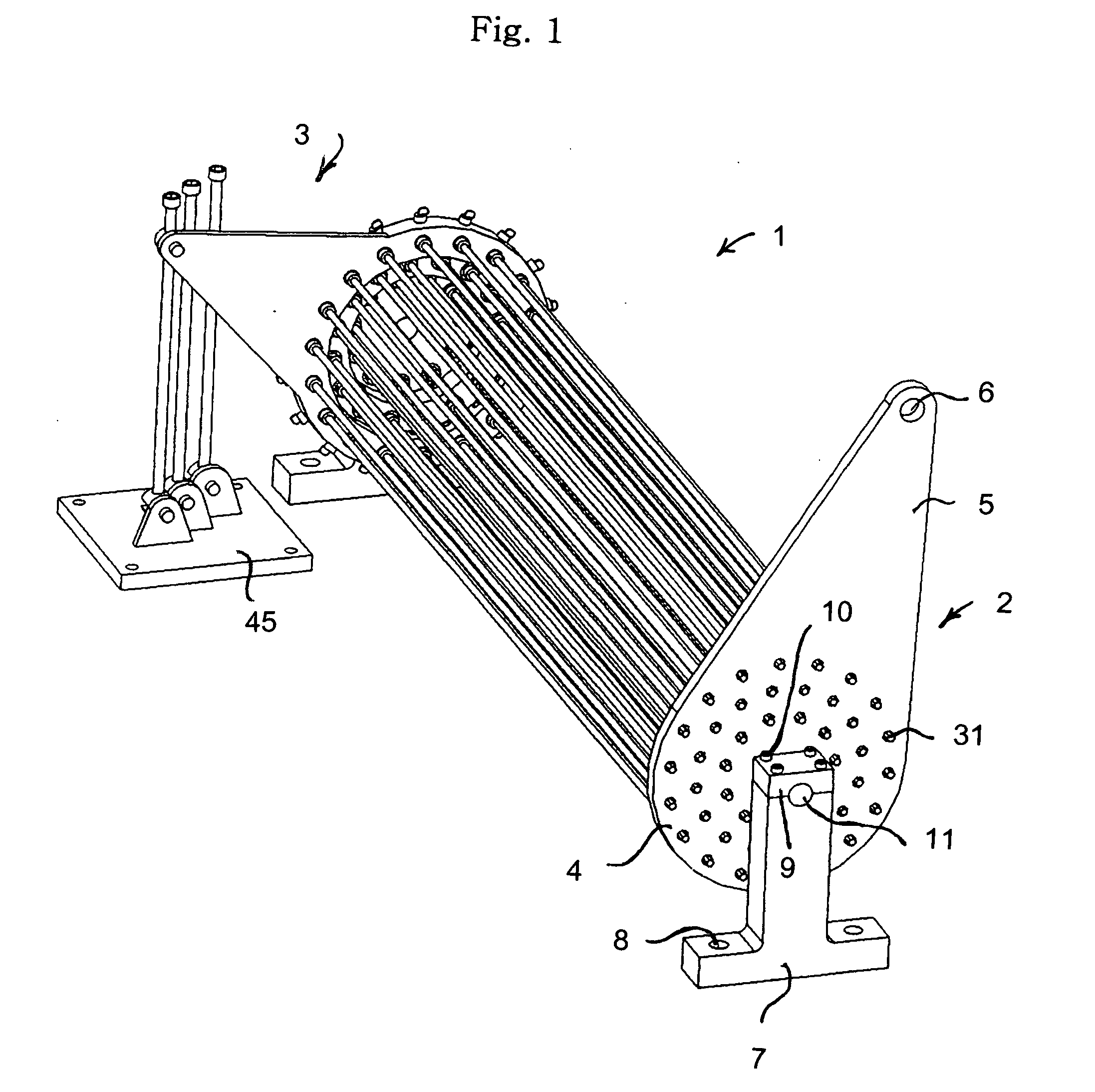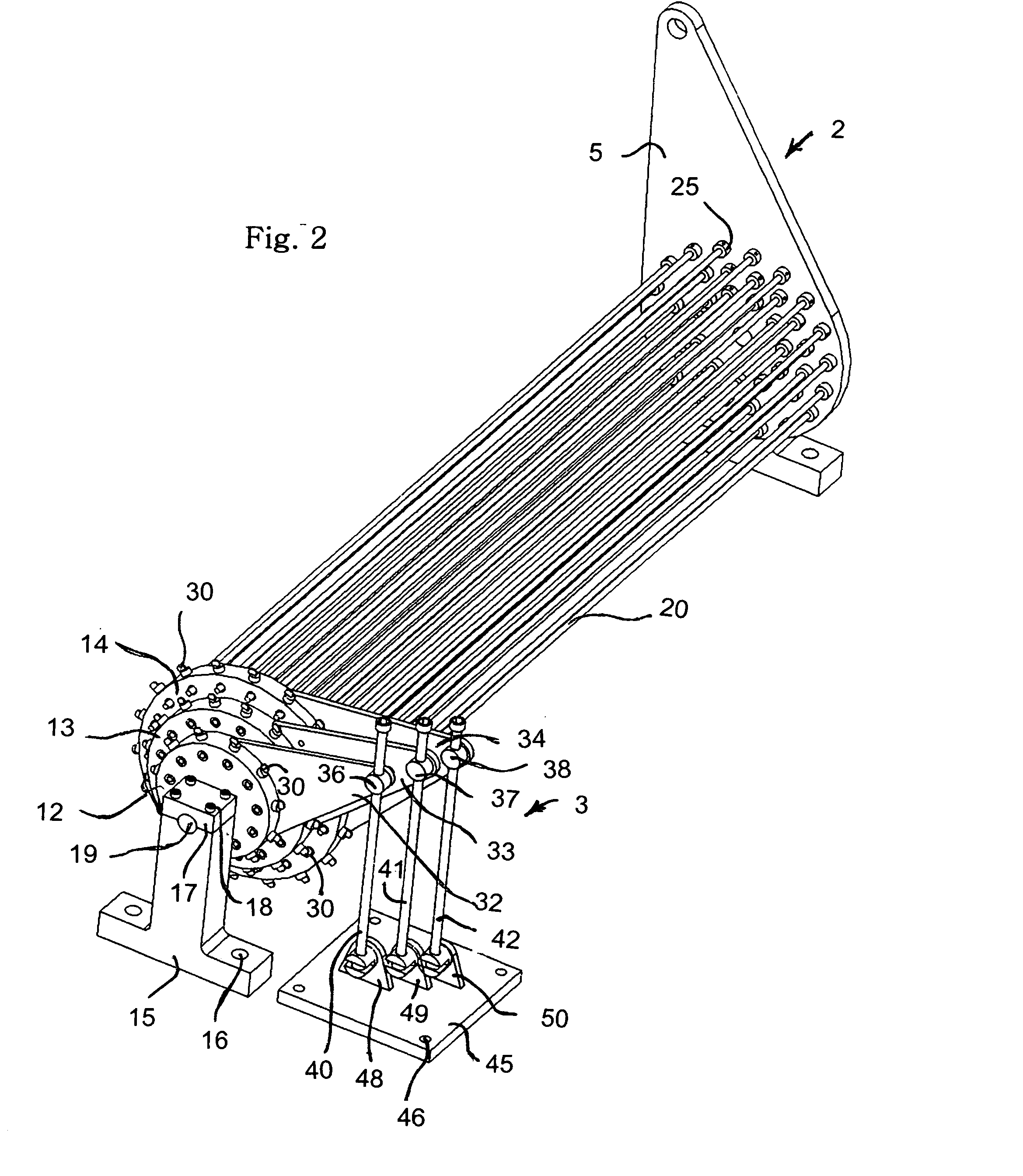Non-helical torsion spring system
a torsion spring and non-helical technology, applied in the direction of torsion springs, mechanical equipment, transportation and packaging, etc., can solve the problems of preventing composite or non-metallic construction, significant obstacles to the true torsion element, and failure of elements, etc., to achieve the effect of eliminating the stress of non-helical torsion springs
- Summary
- Abstract
- Description
- Claims
- Application Information
AI Technical Summary
Benefits of technology
Problems solved by technology
Method used
Image
Examples
Embodiment Construction
[0047]Referring now to the figures of the drawings in detail and first, particularly, to FIG. 1 thereof, there is seen a perspective view of a first, manual engagement embodiment of a torsion spring system 1 according to the invention, having a working or load end 2 and a control end 3. A working end ring 4, located at the working end 2, has a working arm 5 with an engagement opening 6 acting as a work or load attachment point, for instance for attachment to a vehicle chassis or frame. The working end ring 4 is mounted on a working end mount 7 having mounting holes 8, for instance for mounting on a moving member, such as a suspension member for a wheels of a vehicle. The mount 7 also has a cap 9 secured by bolts 10. A bearing opening 11 is formed by the mount 7 and the cap 10. The load could also be a building structure and the moving member a door, such as a garage door, preferably an overhead garage door.
[0048]As is best seen in FIG. 2, three independent control rings 12, 13, 14 a...
PUM
 Login to View More
Login to View More Abstract
Description
Claims
Application Information
 Login to View More
Login to View More - R&D
- Intellectual Property
- Life Sciences
- Materials
- Tech Scout
- Unparalleled Data Quality
- Higher Quality Content
- 60% Fewer Hallucinations
Browse by: Latest US Patents, China's latest patents, Technical Efficacy Thesaurus, Application Domain, Technology Topic, Popular Technical Reports.
© 2025 PatSnap. All rights reserved.Legal|Privacy policy|Modern Slavery Act Transparency Statement|Sitemap|About US| Contact US: help@patsnap.com



